Pink fruits are not only beautiful but also packed with flavor and nutrients.
From tropical treats to everyday favorites, these fruits add color to your plate. Let's dive into 11 pink fruits, their seasons, origins, fun facts, and tasty ways to enjoy them!
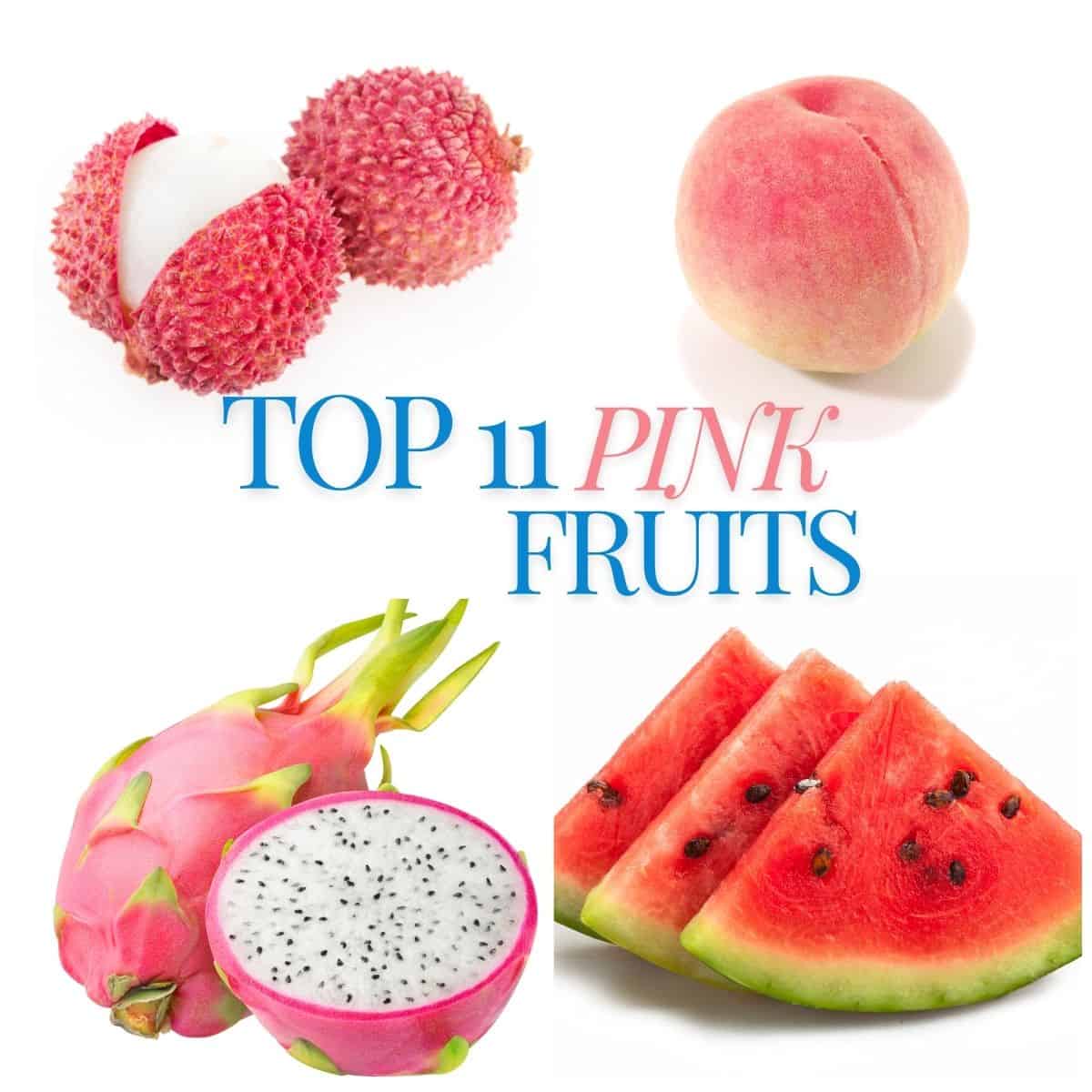
Jump to:
Why are Pink Fruits Pink?
The vibrant pink color in fruits comes from natural pigments such as anthocyanins and carotenoids.
Carotenoids, such as lycopene and beta-carotene, contribute to the pink and orange tones in fruits like pink grapefruit and pink pineapple.
1. Pink Grapefruit
This citrus fruit has a refreshing tartness and a pink or reddish-pink interior.

Season: Winter to early spring
Origin: Barbados
Fun Fact: Pink grapefruits are a hybrid of sweet orange and pomelo, first discovered in the 18th century. Grapefruits are known for their refreshing, tangy-sweet taste, making them a popular choice for both sweet and savory dishes.
How to Prepare: Cut the grapefruit in half and use a spoon to scoop out the segments. For a sweeter option, sprinkle a touch of coconut sugar on top. Grapefruit can also be juiced for a refreshing drink or segmented and added to salads for a citrusy burst.
2. Pink Lady Apples
These apples have a lovely pink blush over a greenish-yellow skin, offering a sweet and slightly tart flavor.

Season: Fall to spring
Origin: Australia
Fun Fact: Pink Lady apples are a cross between Golden Delicious and Lady Williams apples, known for their crisp texture and sweet-tart flavor. They are one of the first apples to be trademarked and must meet specific standards to be sold under the Pink Lady name.
How to Prepare: Enjoy fresh as a crunchy snack, slice into salads for a burst of sweetness, or bake into vegan apple pie, crisps, or muffins. Pink Lady apples also pair well with nut butter for a savory-sweet combo. Use them in Apple Cinnamon Steel-Cut Oats or in this Autumn Pasta Salad.
3. Pink Guava
Pink guavas have pink or salmon-colored flesh and are rich in tropical sweetness.

Season: Year-round in tropical climates
Origin: Central America
Fun Fact: Pink guava is rich in vitamin C, offering more than oranges. Guavas are also known for their fragrant aroma and sweet, slightly tangy taste.
How to Prepare: Slice the guava in half and scoop out the flesh with a spoon, or eat it whole with the skin for added fiber. Blend into smoothies, juice it for a refreshing drink, or use in desserts like sorbets and tarts. Pink guava also pairs well with coconut and lime, making it perfect for tropical recipes.
4. Rhubarb
While technically a vegetable, rhubarb is often used in sweet desserts and has a pink to reddish-pink color when cooked.
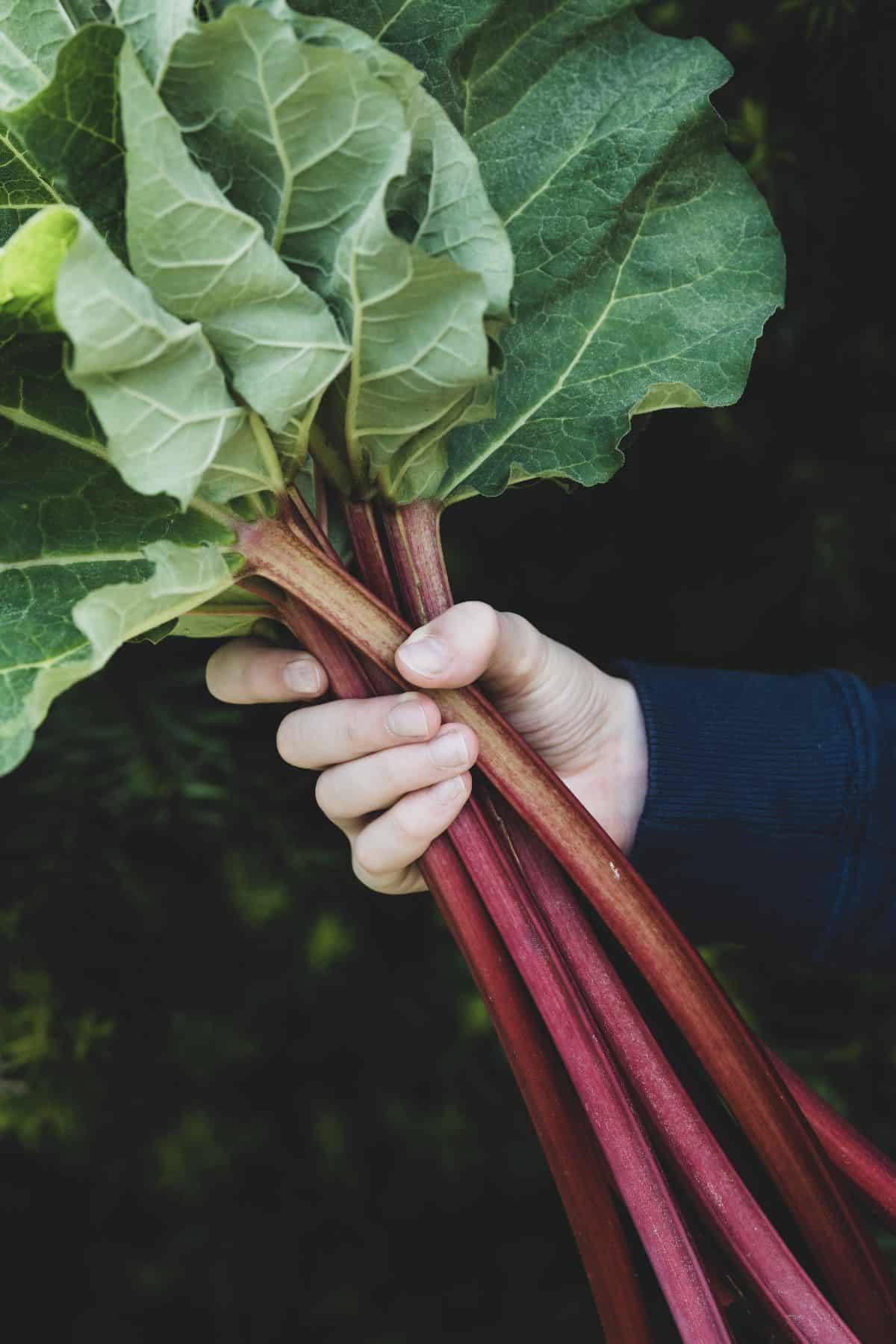
Season: Spring to early summer
Origin: Asia, particularly China
Fun Fact: Rhubarb is technically a vegetable, though it's often treated as a fruit in cooking. The leaves are toxic and should never be consumed.
How to Prepare: Trim and discard the leaves, then slice the stalks. Rhubarb is tart when raw, so it's typically cooked with sweeteners. Use it in pies, crumbles, and compotes, or stew it to make a tangy topping for oatmeal and yogurt. For a refreshing drink, simmer rhubarb with sugar and water to create a syrup that can be mixed with sparkling water or cocktails.
5. Watermelon
The juicy, pink, or red flesh of watermelon is a favorite summer treat.

Season: Summer
Origin: Southern Africa
Fun Fact: Watermelon is 92% water, making it super hydrating. Watermelon is also one of the oldest cultivated fruits, enjoyed for thousands of years.
How to Prepare: Slice into wedges for a refreshing snack, cube it for fruit salads, or blend into smoothies and juices. For a savory twist, pair watermelon cubes with vegan feta cheese, mint, and a drizzle of balsamic glaze. Watermelon can also be grilled to enhance its natural sweetness and served as a unique side dish.
6. Pink Pitaya (Dragonfruit)
This fruit is not only visually striking but also has a mild, sweet taste and is often used in smoothie bowls and desserts.

Season: Summer to early fall
Origin: Central America
Fun Fact: Dragon fruit blooms only at night and is pollinated by bats and moths. Despite its exotic appearance, dragon fruit is low in calories and high in fiber.
How to Prepare: Slice the fruit in half and scoop out the flesh with a spoon. Enjoy it fresh, blend into smoothies, or dice it for fruit salads. Dragon fruit also makes a colorful topping for vegan smoothie bowls, oatmeal, or coconut yogurt. For a refreshing twist, freeze the flesh and blend it into a naturally sweet sorbet.
7. Pink Pomelo
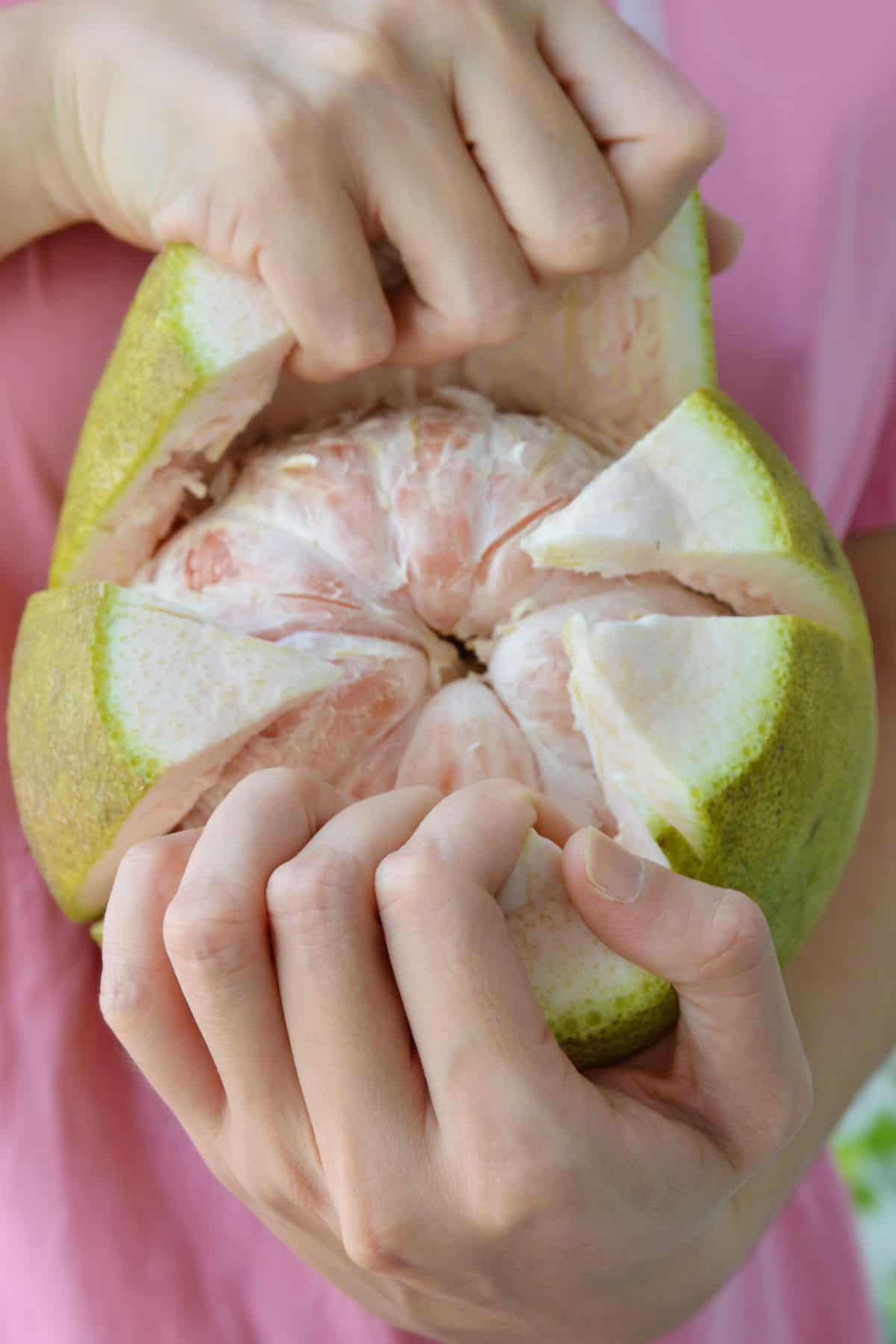
Season: Winter to early spring
Origin: Southeast Asia, particularly Malaysia and Thailand
Fun Fact: Pomelo is the largest citrus fruit and is considered an ancestor of the grapefruit. Unlike grapefruit, pomelo has a milder, sweeter flavor with less bitterness.
How to Prepare: Peel the thick rind, remove the membrane from each segment, and enjoy the juicy flesh. Pink pomelo can be eaten fresh, added to fruit salads, or tossed into green salads for a citrusy burst. Its sweet-tart flavor also pairs well with savory dishes like tacos or Asian noodle bowls. For a refreshing drink, squeeze pomelo juice and mix with sparkling water.
8. Pink Peach
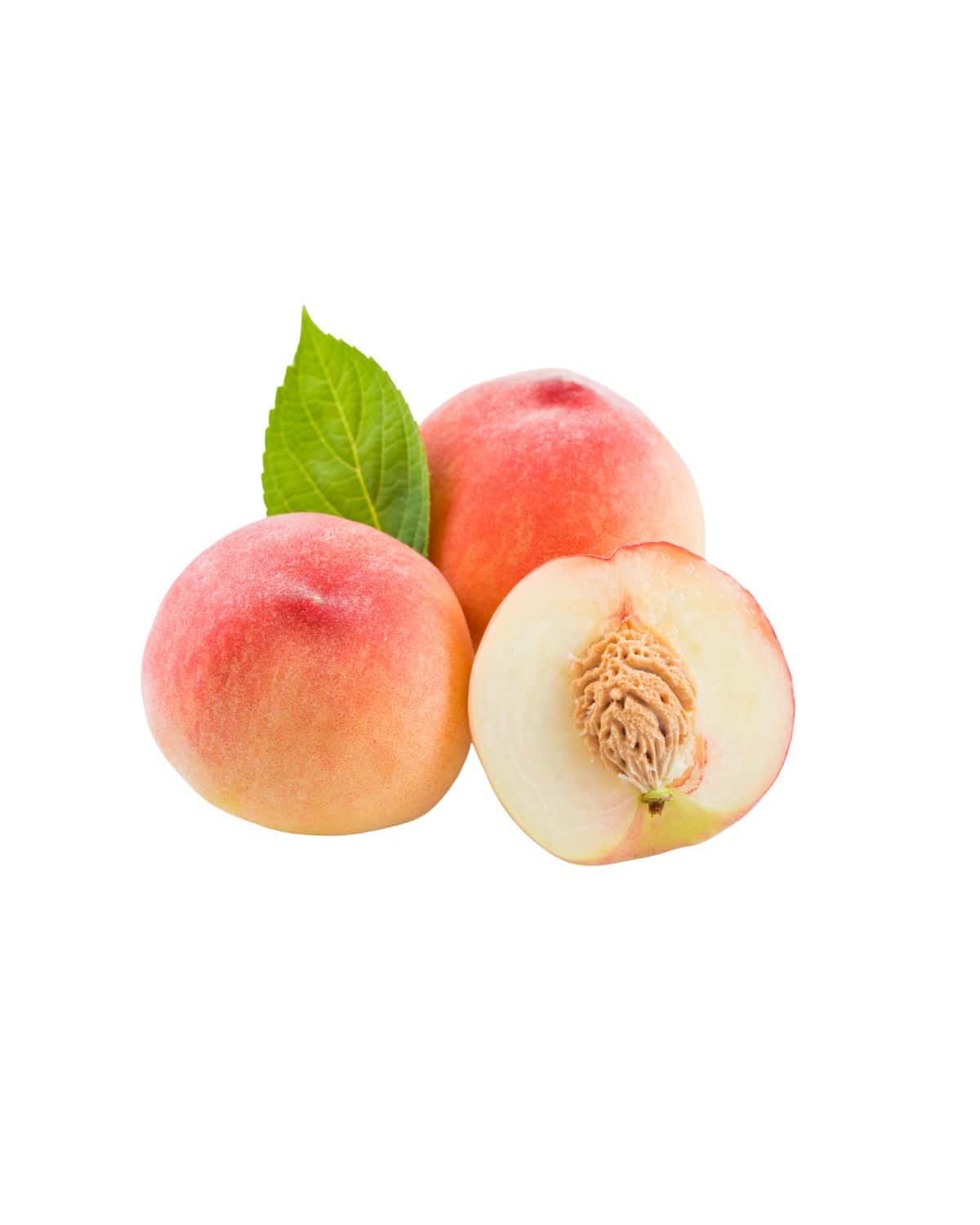
Season: Summer
Origin: China
Fun Fact: Peaches symbolize longevity and immortality in Chinese culture. Peaches have been cultivated for over 4,000 years and are enjoyed worldwide for their juicy, sweet flavor.
How to Prepare: Eat fresh by biting into the fruit or slicing it for a mess-free option. Grill peach halves for a smoky, caramelized treat, or bake them into a vegan peach cobbler, tarts, or pies. Peaches also pair well with salads, oatmeal, and dairy-free yogurt, and they can be blended into smoothies or pureed for sauces and desserts.
9. Figs

Season: Late summer to early fall
Origin: Western Asia and the Mediterranean
Fun Fact: Not all fig varieties have pink insides, but many do! Figs come in various types, each with unique colors, textures, and flavors. Here’s a quick breakdown of some popular pink or pinkish figs:
Figs with Pink or Red Insides:
- Mission Fig (Black Mission): Deep purple-black skin with a vibrant pink to red interior; rich and sweet.
- Kadota Fig: Green skin with a pale pink to amber interior; mild and honey-like flavor.
- Brown Turkey Fig: Brownish-purple skin with a light pink to reddish interior; less sweet, great for savory dishes.
- Adriatic Fig: Light green skin with a bright pink to red interior; super sweet, often used in jams.
- Celeste Fig: (Pictured) Light brown or violet skin with a pinkish interior; sweet and rich.Figs are one of the oldest cultivated fruits, with evidence of their cultivation dating back over 11,000 years. Their pinkish-red interior is rich in antioxidants and dietary fiber, supporting digestive health.
How to Prepare: Enjoy fresh figs by slicing them in half and eating the sweet flesh directly. They pair well with vegan cheese, nuts, and balsamic glaze for a savory appetizer. For desserts, add figs to tarts, cakes, or dairy-free ice cream. They can also be dried and enjoyed as a naturally sweet snack.
10. Lilly Pilly Berries

Season: Summer to early autumn
Origin: Australia
Fun Fact: There are many varieties of Lilly Pilly berries which vary in color, size, and flavor. They are produced by a group of evergreen shrubs and small trees native to Australia and Papua New Guinea. They are also known as riberry, and have been used by Indigenous Australians for centuries. The berries have a tart, cranberry-like flavor with a hint of clove.
How to Prepare: Enjoy them fresh or use them in jams, chutneys, and sauces. They also make a unique addition to fruit salads, vegan baked goods, and savory dishes, adding a pop of color and tartness.
11. Lychees
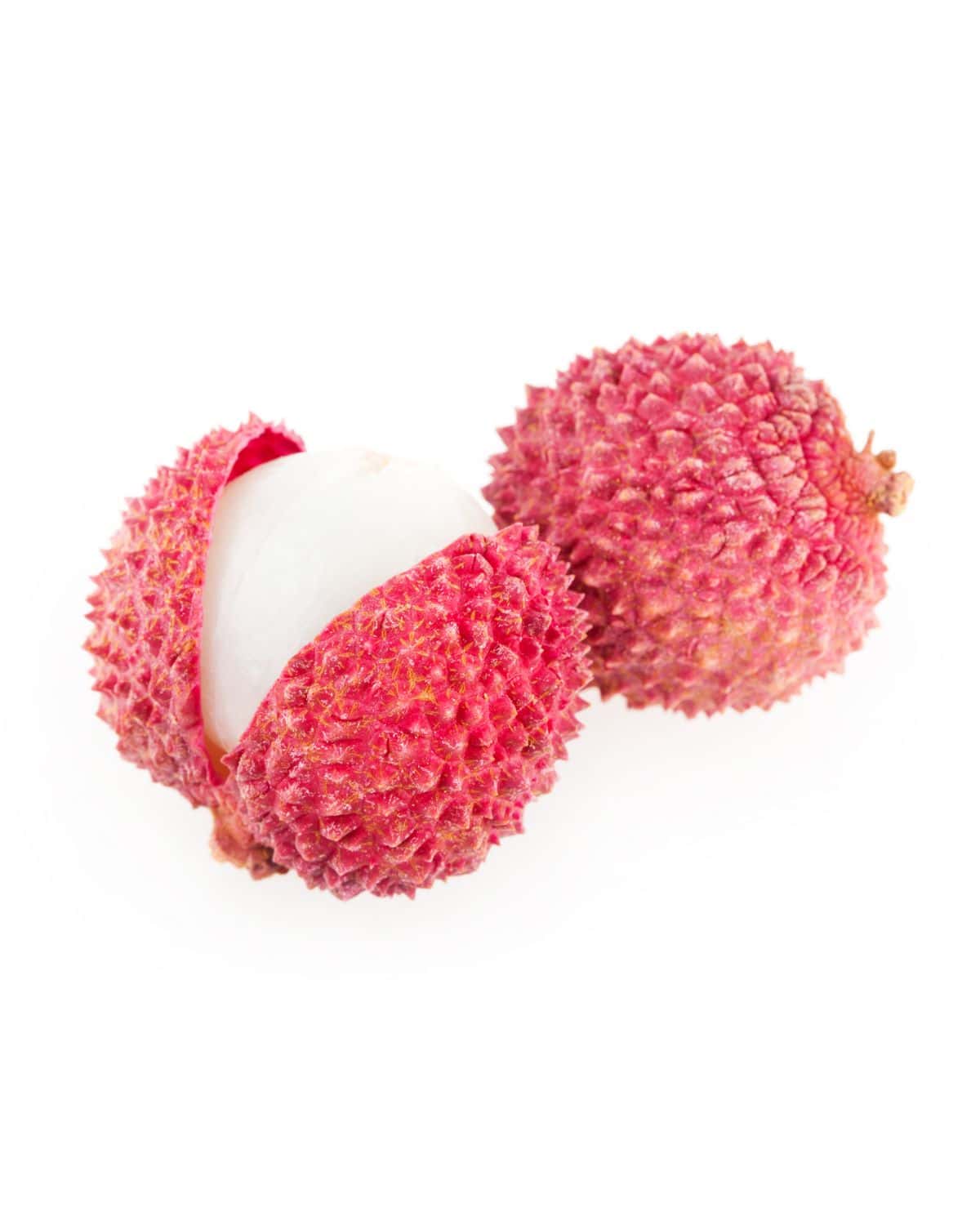
Season: Late spring to early summer
Origin: China
Fun Fact: Lychees have been cultivated for over 2,000 years and are known for their sweet, floral flavor.
How to Prepare: Peel the outer pink spiky shell from the fruit, remove the seed, and enjoy the juicy flesh fresh. Lychees can also be added to fruit salads, blended into smoothies, or used as a topping for vegan desserts like sorbets and puddings.


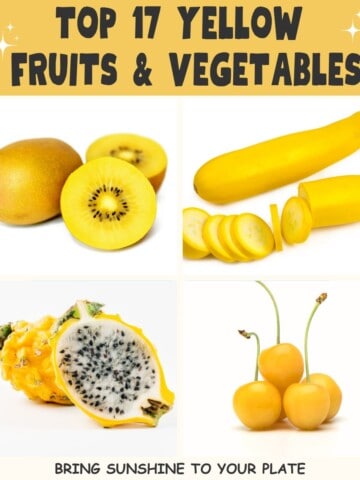
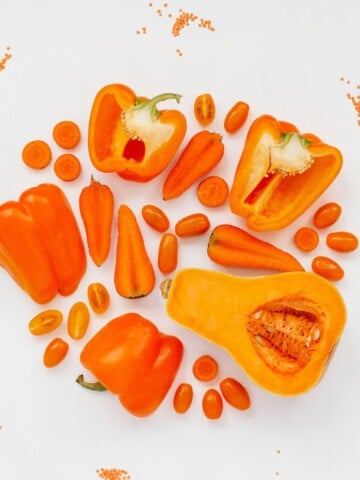


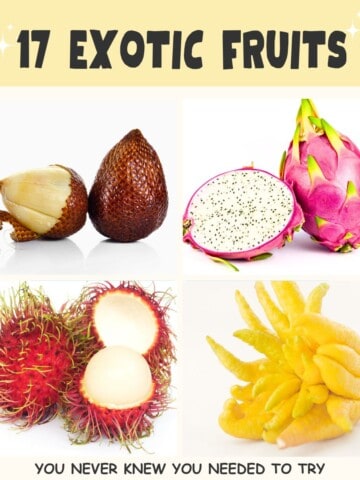


Comments
No Comments